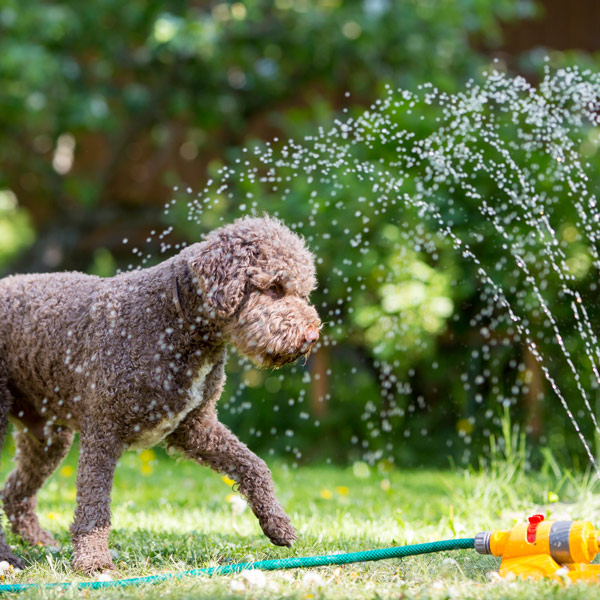Last Updated on 9 months by Dr Alisha Barnes

The birds are singing, the grass is greening, and temperatures are feeling amazing for getting out with your 4 legged best friend! As you and your fuzzy bestie get busy with all the fun activities spring has to offer, there are a few considerations to help your pet get back to more activity with you in a safe and healthy way.
1. Build endurance
Slowly build up their endurance on walks by increasing their walk length by 15 minutes every week. Let’s face it, with the winter cold, walkies got a whole lot shorter because us humans did not want to be out in that chill for long! Jumping to longer walks may be tempting with the warmer weather, but increasing by increments allows their body to build strength and endurance to decrease the likelihood of an injury with the increased activity.
2. Keep them hydrated
Take water with you on walks or hikes. Dogs can dehydrate very quickly, just like people, and tend to do so more when they are adapting to warmer weather. Dogs are also not able to regulate their body temperature as well as humans, so they can be prone to heat stroke. If you notice drooling, excessive panting, weakness, or vomiting, get your dog to shade and offer water. If the symptoms persist, your dog should see their vet for further treatment.
3. Watch for signs of fatigue.
Many people want to play in the sunshine with their dog until they are tired enough to just lay in the grass, but exercising and playing with your dog when it is fatigued actually makes it much more prone to injuries. Fatigue starts much earlier than when the dog chooses to lay down rather than continue to play. By catching early signs, you can know when to stop or take a break before increasing your dog’s injury risk. Some signs of fatigue include, changes in panting/breathing, trembling, leaning or weight shifting when standing, or shifting positions such as sitting squarely and tipping off onto their hip.
4. Watch out for allergies
Many plants begin pollinating in the spring and dogs may be allergic or sensitive to these pollens. If their allergies are flaring up, often it can affect their breathing and how sensitive they may be to heat, leading to faster fatigue and just overall not feeling their best.
5. Get them adjusted!
As their body is working harder and getting stronger by your side, chiropractic care supporting their joint mobility and muscle comfort helps them keep feeling and functioning their best. It also keeps them on track building up to so many summer adventures to come!
